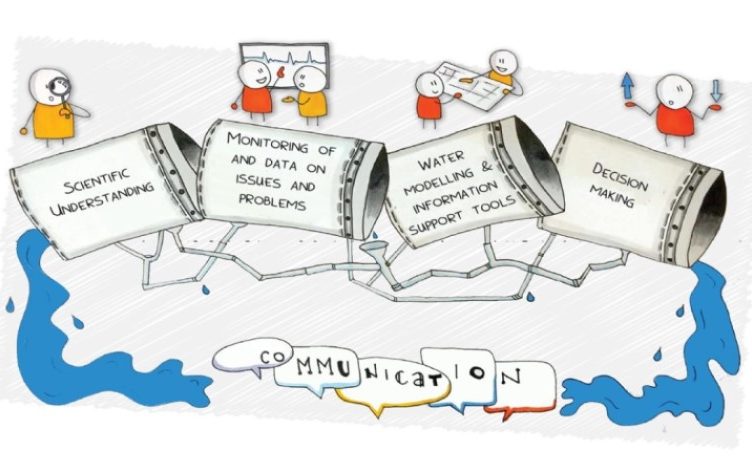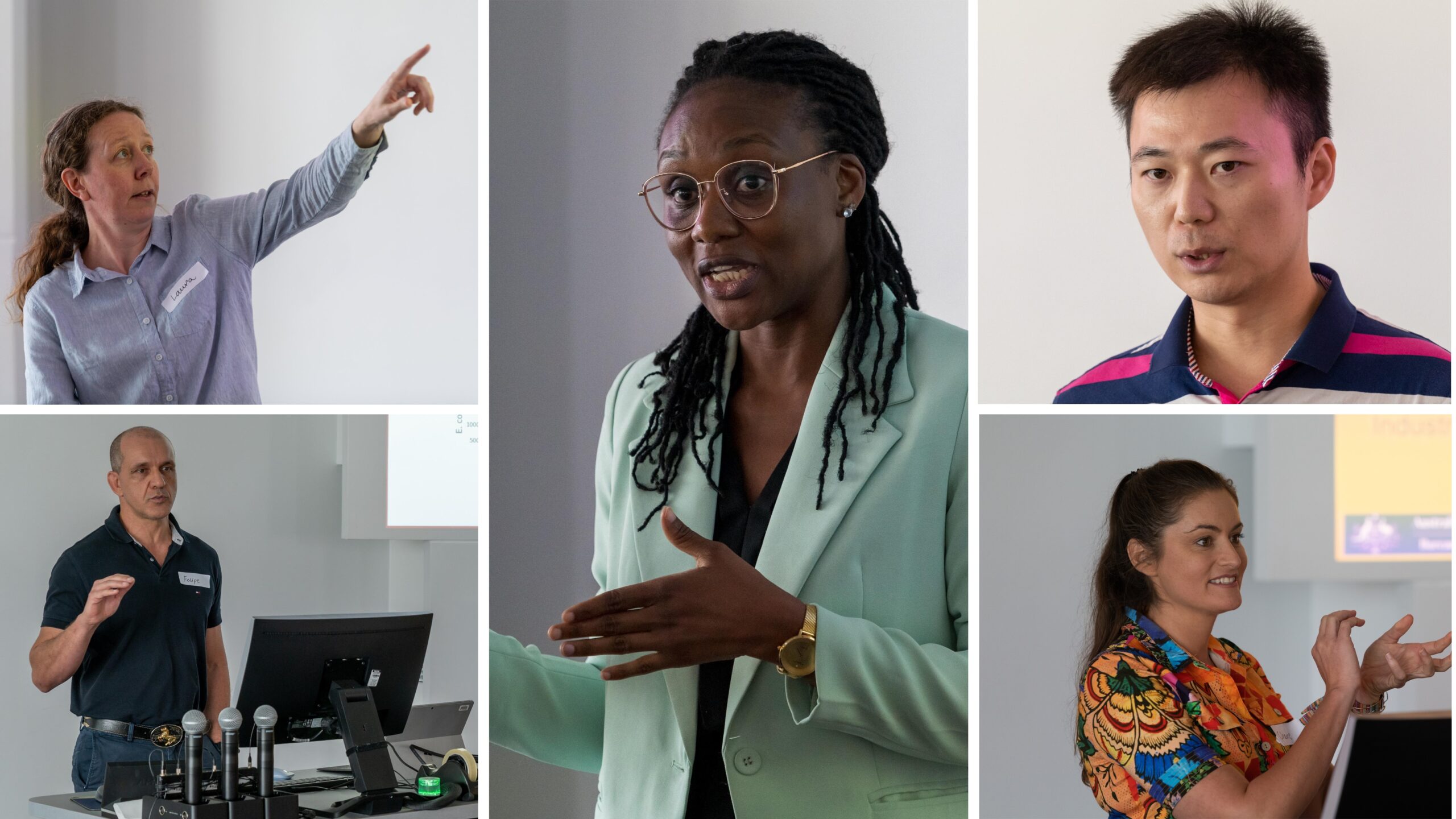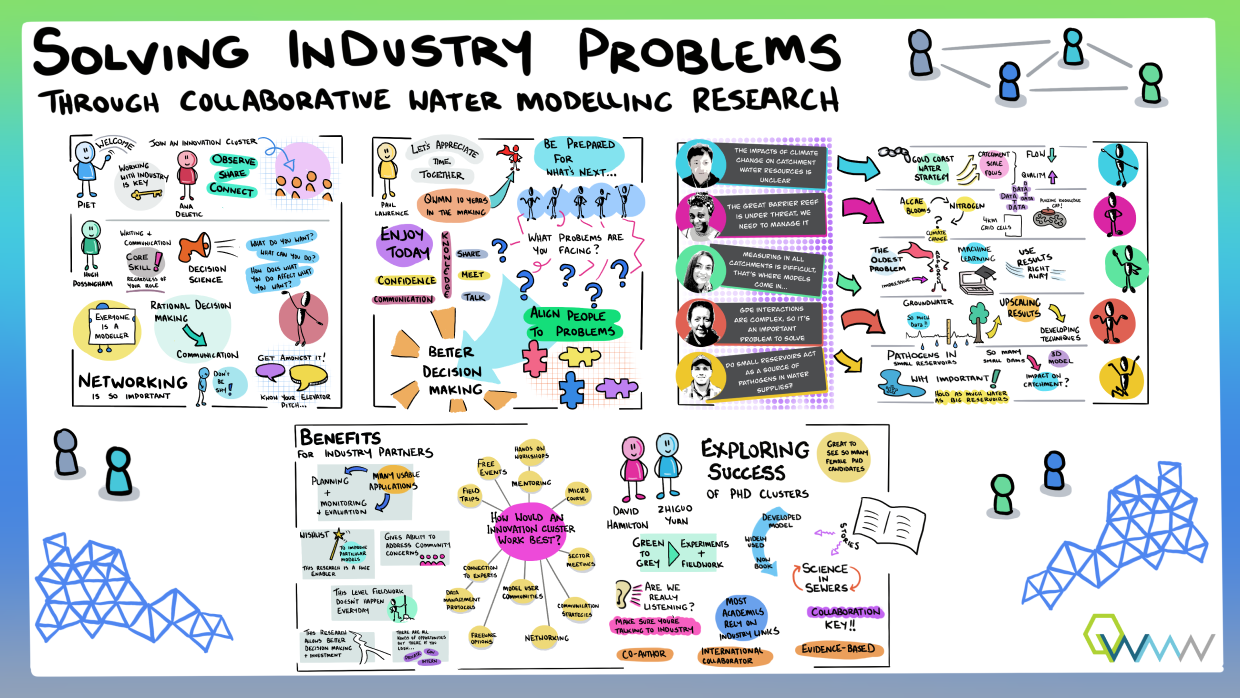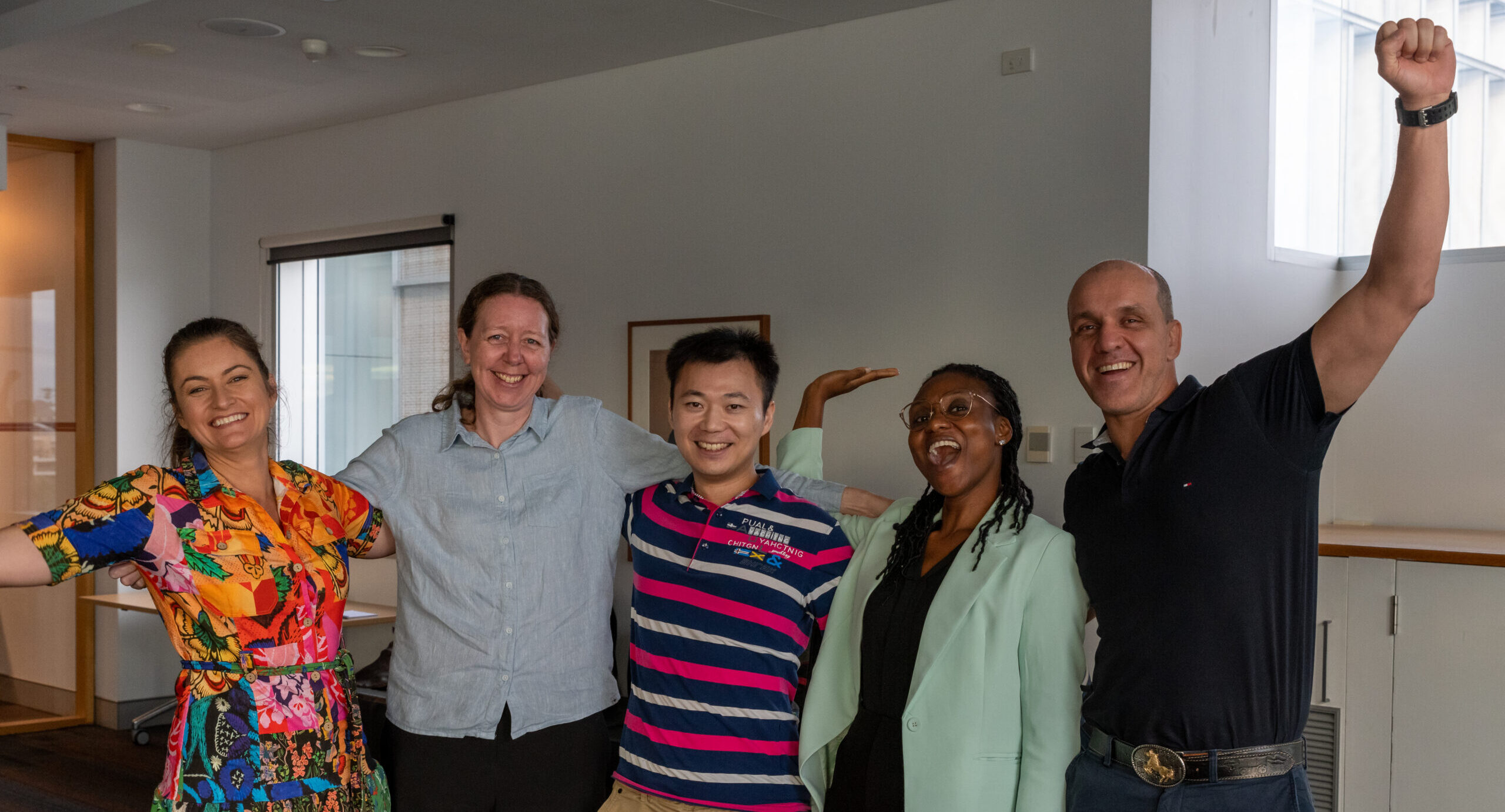
05/12/2024
Event Summary: Overview of water quality modelling projects from the Queensland Water Modelling Network with Callym Dunleavy
Read more
After 3 plus years of rigorous water modelling research, the Queensland Water Modelling Network’s five Innovation Associates (IAs) are complete or wrapping up their industry-based research. We brought them together on 21 March to reflect and celebrate their success at QUT’s Gardens Point Campus.
A first for the Department of Environment and Science QWMN program, the Innovation Program is based on lessons and insights from successful Industrial Doctorate Centre (IDC) and Knowledge Transfer Partnership (KTP) models in the UK and was initiated to address the need to build and improve capacity and capability across the state’s modelling community.
In 2019, five aspiring PhD candidates from universities across Queensland, applied and won scholarships with their Universities with support from QWMN to conduct research on an industry problem, connected directly with an organisation within the sector. They are:
All have either completed or are nearing completion of their research with four of the five of the cluster , employed and continuing their careers in various water management roles.

At this final Showcase event, we heard from each Associate, their university supervisors and industry partners on key findings from their research, key or novel processes and methodologies that supported the research, and what this work has meant for industry partners.
For the Associates, the scholarships allowed them time to dedicate their focus to research, without the concern of an income. Being part of the Program has also led to careers in the sector, academic publications of influence and unequalled professional development. One surprising outcome was the synergy found with each other’s, otherwise starkly different projects, and the chance to discuss and share data and knowledge between them.
For the industry, this work has provided essential investigations that would usually be impossible to achieve given day-to-day business. Officers were more than willing to support and explore research they rarely get to dive deep into, and universities have had a front-row seat to see what drives an industry partner, the flow of impact and the value of investing in relationships.

To learn more about this image and the Innovation Associates projects check out this earlier article
However, it was the collective story told at this event that really supports the need for Programs like this. Across all five projects, they generated new relationships within, across and beyond project bounds. We heard that it was the opportunity to meet and get to know others within the “water industry” that generated unexpected impacts. University supervisors, industry representatives and students alike, discovered opportunities to learn and understand what others are doing in the water sector, providing new alignment, even across organisations.


It is the heart and soul of every project that elicits the most valuable outcomes – the PEOPLE.
Mid way through the day, we heard from Mark Jacobs, Deputy Director General at Department of Environment and Sciences that this work has sparked further interest from within the department and they are looking at future funding for such an impactful cause. We are looking forward to seeing future interest and investment in this kind of program across the sector.
Over the coming weeks and months you will hear more from the Innovation Associates, their supervisors and industry partners as we hope to translate this impact into a rich story.
Watch this space!
Ani, C. J., Smithers, S. G., Lewis, S., Baird, M., & Robson, B. (2023). Ereefs modelling suggests trichodesmium may be a major nitrogen source in the great barrier reef. Estuarine, Coastal and Shelf Science, 285, 108306–108306. https://doi.org/10.1016/j.ecss.2023.108306
O’Sullivan, C. M., Ghahramani, A., Deo, R. C., Pembleton, K., Khan, U., & Tuteja, N. (2022). Classification of catchments for nitrogen using artificial neural network pattern recognition and spatial data. Science of the Total Environment, 809. https://www.sciencedirect.com/science/article/abs/pii/S0048969721062173 (for which Cherie has been awarded for Publication Excellence at USQ)
O’Sullivan, C. M., Ghahramani, A., Deo, R. C., & Pembleton, K. G. (2023). Pattern recognition describing spatio-temporal drivers of catchment classification for water quality. The Science of the Total Environment, 861, 160240–160240. https://doi.org/10.1016/j.scitotenv.2022.160240
